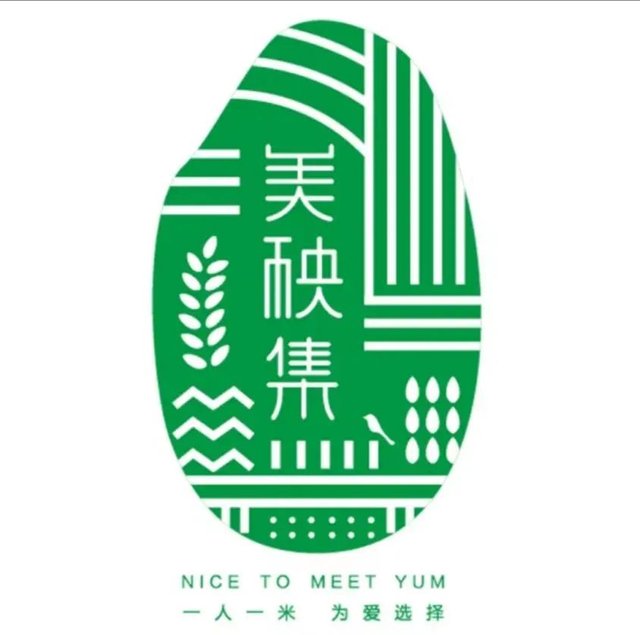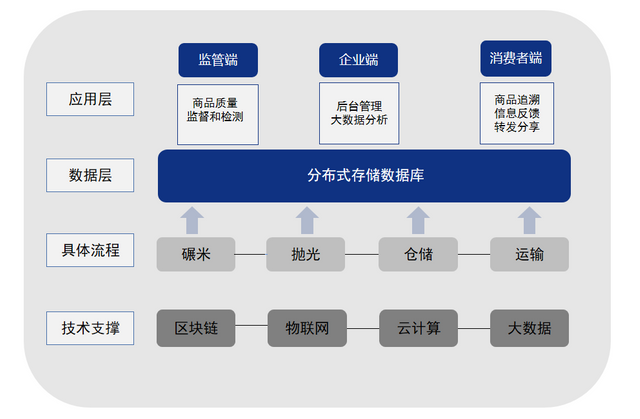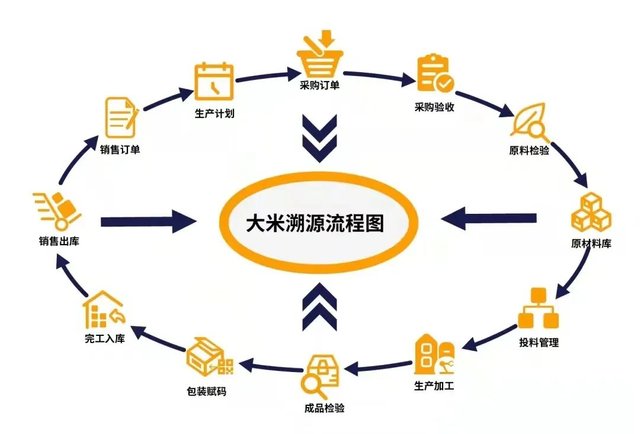
Food is fundamental for the people, and rice is fundamental for making food.
Recently, Meiyangji, a famous brand in rice industry achieved cooperation with Vonechain Technology to establish “One Device One Code” rice traceability platform based on blockchain traceability technology in order to build a high transparent anti-counterfeiting traceability system for consumers and facilitate digital transformational growth of brand.
“Fresh Rice” Meiyangji
Shanghai Meiyangji Agriculture Development Co., Ltd is an innovative technology-based company based on modern agriculture, IoT, blockchain and new retail, while trademark “Meiyangji” under the company is an exclusive brand of “fresh rice”. Meiyangji upholds the principle of integrating intelligence and serving people, at the same time as a practitioner of healthy China, it focuses on healthy food via the concept of “One People One Rice, Choose For your Loved Ones”, puts effort on people’s welfare, and determines to become the leader of China fresh rice industry. The historical mission of Meiyangji people is from how to “eat until full” to how to “eat well”, and eventually leads the world at the level of “eating well”.
First is to preserve the nutritional value of rice during processing phase. Meiyangji’s fresh rice is unpolished, thus it retains 95% nutrient of original paddy rice. Fresh rice which has not been over-dried contains 15.5% of water content to make rice taste smooth, silky, and with strong fragrance. Second is to maintain freshness of rice during circulation phase. Through brown rice circulation method, Meiyangji’s fresh milling and selling approaches have kept the freshness of rice in maximum, while brown rice produced from place of origin will undergo vacuum packaging immediately, adopt cold chain logistics transportation and store in constant temperature and humidity to achieve whole process of freshness preservation in circulation phase.

Current Situation of Domestic Rice Market
More than 2/3 of China’s population take rice as their main food, thus rice is one of the most important grain varieties in our country, and also the most essential component of China’s food safety. According to relevant data, rice is the staple food of 910 million people in our country, and annual consumption of paddy rice as food is 238.8 billion Jin.
01 Popularity of “Unpolished Rice” is Hazardous to Consumers’ Health
In order to pursue profit maximization, many rice enterprises use finish machining to polish and mill the rice repeatedly in order to attract consumers via its good appearance. Labelled with bright and transparent colour, plump grain and rich nutritional value, rice can be sold in high price to conceal the truth and deceive the consumers.
Polished rice is completed after deep milling and polishing in repeated times, thus this causes germs and aleurone layer that store most of the vitamins, minerals and large quantity of dietary fibre nutrition to fall off. Eating polished rice can only absorb carbohydrate easily but it does not contain any nutritional value.
Furthermore, some black-hearted vendors even use cheap and poisonous industrial oil to polish rice, for mild case, this will affect digestive system and nervous system of people; while for severe cases, this can be life-threatening. Meanwhile, over-polishing can change old rice to new rice, hence illegal manufacturers will remove mouldy parts of rice via over-polishing, then packed again and released to the market, eventually this endangers people’s health.
02 Insufficient Supervision Makes Rice Quality Hard to be Guaranteed
Rice follows a set of stringent standards and rules in processing and storing phases, such as low temperature storage of brown rice, and storage temperature controlled at below 15℃. This is because brown rice will be in dormant state under low temperature, thus water, nutrient and taste value loss due to respiration can be reduced, pest and mould can be avoided, and quality is safe and assured. Moreover, excessive low water content will also affect freshness and taste value of rice.
However, in order to accelerate circulation speed or reduce complicated storage, most of the enterprise staffs do not follow strictly to the rules and standard. Therefore, this not only causes large nutritional value loss in rice, decrease in rice quality, but also increases difficulties of enterprises to supervise all manufacturing and processing phases.
Meanwhile, during supply chain process, phenomenon such as goods fleeing among dealers and popularity of counterfeit and shoddy products still exist, thus this causes consumers to decrease their confidence on rice brand and bring severe profit loss to the brand.
03 Product Diversity Hard to be Reflected
Rice brands in the market have serious homogeneity. Except for certain leading brands of rice industry, other niche brands are easily judged by consumers with one standard and hard to be recognized by them. Despite that rice produced by certain rice enterprises possesses distinctive advantages due to difference in regions, technology and so on, for example with better taste, higher quality of freshness, or even richer nutritional value, etc., lack of showing information of whole chain processes starting from producing, manufacturing, circulating to end consumers results in difficulties in reflecting product diversity and brand value failed to be enhanced.
Hence, how to carry out whole process chain tracing, monitoring and anti-counterfeiting on products effectively is always a concerned issue in rice industry.
Blockchain Traceability Digitalized Solutions
Under the background of rural revitalization, National “14th Five-Year” Plan has clearly stated the importance of establishing food traceability system to ensure food safety. As a powerful technological support in traceability sector, blockchain technology can improve transparency of food industrial chain effectively to assure food safety.
Based on VoneTracer, a self-researched and developed blockchain traceability SaaS platform, Vonechain Technology builds “One Device One Code” whole process traceability of rice traceability platform for Meiyangji in order to avoid irregularities during manufacturing, processing and circulation process, elude channel fleeing and counterfeiting phenomenon, strengthen supply chain monitoring and channel control, and maintain brand image. At the same time, demonstration of whole process information at the end terminal is beneficial in showing product difference and helping to improve brand value.

01 “One Device One Code” Whole Process Traceability Makes Unpolished Rice Nowhere to Hide
Based on blockchain’s traceable and tamper-proof characteristics, rice traceability platform can achieve real traceability of whole product chain. Just by scanning QR code on the rice package, consumers can easily obtain real and transparent whole process manufacturing information, differentiate whether the rice they wish to purchase undergoes roughing or finishing process, and whether the rice was over-polished, so that they can choose the rice with rich nutritional value according to own requirements.
02 Real-Time Tracking and Monitoring to Control Rice Quality Strictly
Via connecting to IoT devices, rice traceability platform can achieve temperature and humidity detection while gathering information in order to monitor whether rice production meets the standard in real time. Meanwhile, based on process information recorded by related workers via handphone, enterprise can also determine whether rice manufacturing, processing and circulation processes are falsified, or whether the workers are strict and careful enough during work. Once issue was found, enterprise can find out the phase where mistake occurred rapidly and accurately to carry out modification and held accountability based on information on chain. By using blockchain traceability technology, enterprise can control product quality more effectively in order to ensure high quality of product.
At the same time, through “One Device One Code”, all process flow information of product will be written into blockchain, while product information of every phase starting from manufacturing, transportation to final sales will all be recorded on blockchain to ensure uniqueness of product. In addition, big data analysis function of scanning area and scanning frequency, reminder function on exceptional risk of rice traceability platform terminal can carry out tracking and analysis on the whereabouts of every product in order to effectively avoid fleeing, switching and counterfeiting of marketing channels from happening.
03 Terminal Scanning Information Display Helps Brand Establishment

Rice traceability platform has given every fresh rice a real identity information so that data of product in every phase starting from raw grains to manufacturing, processing, storing, logistics, end terminal until consumers is open, transparent. We will also demonstrate to consumers about the special processing technologies and advantages in real, such as truly retaining 95% nutrition of Meiyangji’s rice via high precision of fresh milling technology, using low temperature storage to maintain freshness of rice, reserving taste value of rice without over-drying, etc. to increase brand reputation and influence, and at the same time ensure quality of commodities purchased by consumers effectively.
Conclusion
Followed by upgrading in consumption level, requirement of consumers on rice has changed from “eat until full” to “eat well”, while ensuring the balance of 3 dimensions, namely nutrition, taste and freshness is an inevitable path that needs to be fulfilled by rice enterprises. For instance, how enterprise can build trust consensus with consumers is an important reason of why rice brand eliminates industrial homogeneity and stresses on product diversity. Apparently, blockchain’s tamper-proof, open and transparent all-chain closed-loop traceability technology has become an indispensable weapon during rice brand growth. Currently, in-depth cooperation between two brands will definitely facilitate Meiyangji to proceed to a new step of digital transformational growth and further expand brand influence.